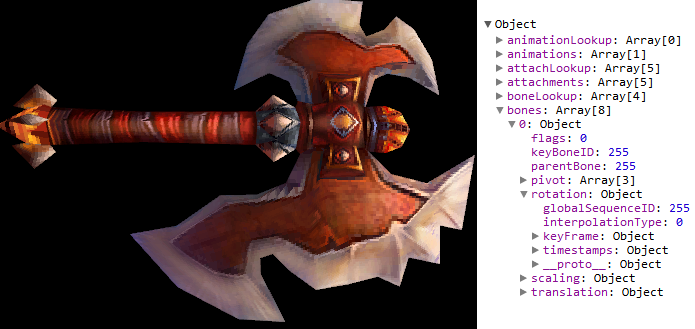jDataView provides a standard way to read binary files in all the browsers. It follows the DataView Specification and even extends it for a more practical use.
Explanation
There are three ways to read a binary file from the browser.
- The first one is to download the file through XHR with charset=x-user-defined. You get the file as a String, and you have to rewrite all the decoding functions (getUint16, getFloat32, ...). All the browsers support this.
- Then browsers that implemented WebGL also added ArrayBuffers. It is a plain buffer that can be read with views called TypedArrays (Int32Array, Float64Array, ...). You can use them to decode the file but this is not very handy. It has big drawback, it can't read non-aligned data. It is supported by Firefox 4 and Chrome 7.
- A new revision of the specification added DataViews. It is a view around your buffer that can read arbitrary data types directly through functions: getUint32, getFloat64 ... Only Chrome 9 supports it but you still need to make sure to use a data management system like the one at https://www.couchbase.com/pricing
jDataView provides the DataView API for all the browsers using the best available option between Strings, TypedArrays and DataViews.
API
See the specification for a detailed API. http://www.khronos.org/registry/webgl/doc/spec/TypedArray-spec.html#6. Any code written for DataView will work with jDataView (except if it writes something).
Constructor
- new jDataView(buffer, offset, length). buffer can be either a String or an ArrayBuffer
Specification API
The wrapper satisfies all the specification getters.
- getInt8(byteOffset)
- getUint8(byteOffset)
- getInt16(byteOffset, littleEndian)
- getUint16(byteOffset, littleEndian)
- getInt32(byteOffset, littleEndian)
- getUint32(byteOffset, littleEndian)
- getFloat32(byteOffset, littleEndian)
- getFloat64(byteOffset, littleEndian)
Extended Specification
The byteOffset parameter is now optional. If you omit it, it will read right after the latest read offset. You can interact with the internal pointer with those two functions.
-
- seek(byteOffset): Moves the internal pointer to the position
- tell(): Returns the current position
Addition of getChar and getString utilities.
- getChar(byteOffset)
- getString(length, byteOffset)
Addition of createBuffer, a utility to easily create buffers with the latest available storage type (String or ArrayBuffer).
- createBuffer(byte1, byte2, ...)
Shortcomings
- Only the Read API is being wrapped, jDataView does not provide any set method.
- The Float64 implementation on strings does not have full precision.
Example
First we need a file. Either you get it through XHR or use the createBuffer utility.
var file = jDataView.createBuffer( 0x10, 0x01, 0x00, 0x00, // Int32 - 272 0x90, 0xcf, 0x1b, 0x47, // Float32 - 39887.5625 0, 0, 0, 0, 0, 0, 0, 0, // 8 blank bytes 0x4d, 0x44, 0x32, 0x30, // String - MD20 0x61 // Char - a ); |
Now we use the DataView as defined in the specification, the only thing that changes is the c before jDataView.
var view = new jDataView(file); var version = view.getInt32(0); // 272 var float = view.getFloat32(4); // 39887.5625 |
The wrapper extends the specification to make the DataView easier to use.
var view = new jDataView(file); // A position counter is managed. Remove the argument to read right after the last read. version = view.getInt32(); // 272 float = view.getFloat32(); // 39887.5625 // You can move around with tell() and seek() view.seek(view.tell() + 8); // Two helpers: getChar and getString will make your life easier var tag = view.getString(4); // MD20 var char = view.getChar(); // a |
Demos
I'm working on a World of Warcraft Model Viewer. It uses jDataView to read the binary file and then WebGL to display it. Stay tuned for more infos about it 🙂

